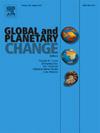Hydroclimate variability in the Tropical Andes recorded by δ18O isotopes from a new network of Polylepis tarapacana tree-rings
Abstract
Stable oxygen isotopes records (δ18O) in tree-rings are commonly used to assess the response of trees to environmental variability being a valuable tool for studying past climate at different temporal and spatial scales. This is particularly relevant in semi-arid regions like the southern Tropical Andes, where ongoing environmental changes coincide with a rapidly increasing demand for hydrological resources, presenting a challenge for ecosystem dynamics and water resource management. In this study, we aim to determine the main spatio-temporal variability of a new network of δ18O Polylepis tarapacana chronologies during the last century, and their relationships with hydroclimate and tropical circulation at local to subcontinental scales throughout the Tropical Andes. For this purpose, we develop six δ18O P. tarapacana tree-ring chronologies across a 450 km latitudinal moisture gradient in the southern Tropical Andes adjacent to the Atacama Desert, covering the period 1900–2007. Results show a clear latitudinal gradient in the δ18O values across the network and significant relationships are observed with other δ18O tree-ring chronologies in Tropical South America, demonstrating clear regional climate influences at a subcontinental scale. A principal component analysis of the δ18O tree-ring chronologies demonstrate a strong regional environmental signal contained in the network, exhibiting a main temporal pattern (PC1 δ18O) that explains 63% of the total variance during the period 1900–2007. Comparisons between PC1 δ18O and environmental variables showed significant negative relationships with precipitation and soil moisture, and positive relationships with temperature and vapor pressure deficit (VPD) during summer when the South American monsoon occurs. The main δ18O tree-ring network signal clearly records tropical atmospheric and circulation patterns across South America. The easterly wind flux conditions from the Amazon basin favor lower δ18O values, and the PC1 δ18O exhibit significant positive correlations with VPD across the entire Tropical Andes and the northern portion of the Amazon basin, and as well as outgoing longwave radiation across the southern Tropical Andes and part of the Amazon basin. The close relationships between the regional signals from our δ18O tree-ring network with the previously mentioned parameters, highlight the potential to develop future hydroclimatic-related reconstructions with these δ18O records to assess climate variability and change across the Tropical Andes.

 求助内容:
求助内容: 应助结果提醒方式:
应助结果提醒方式:


